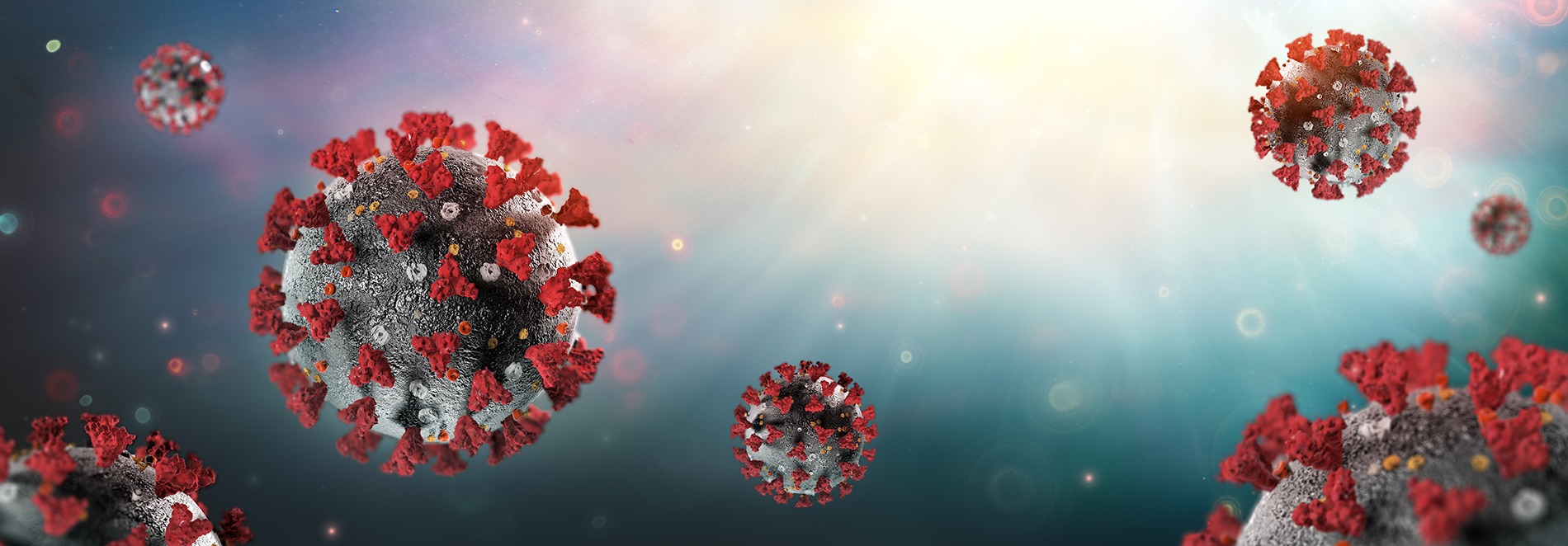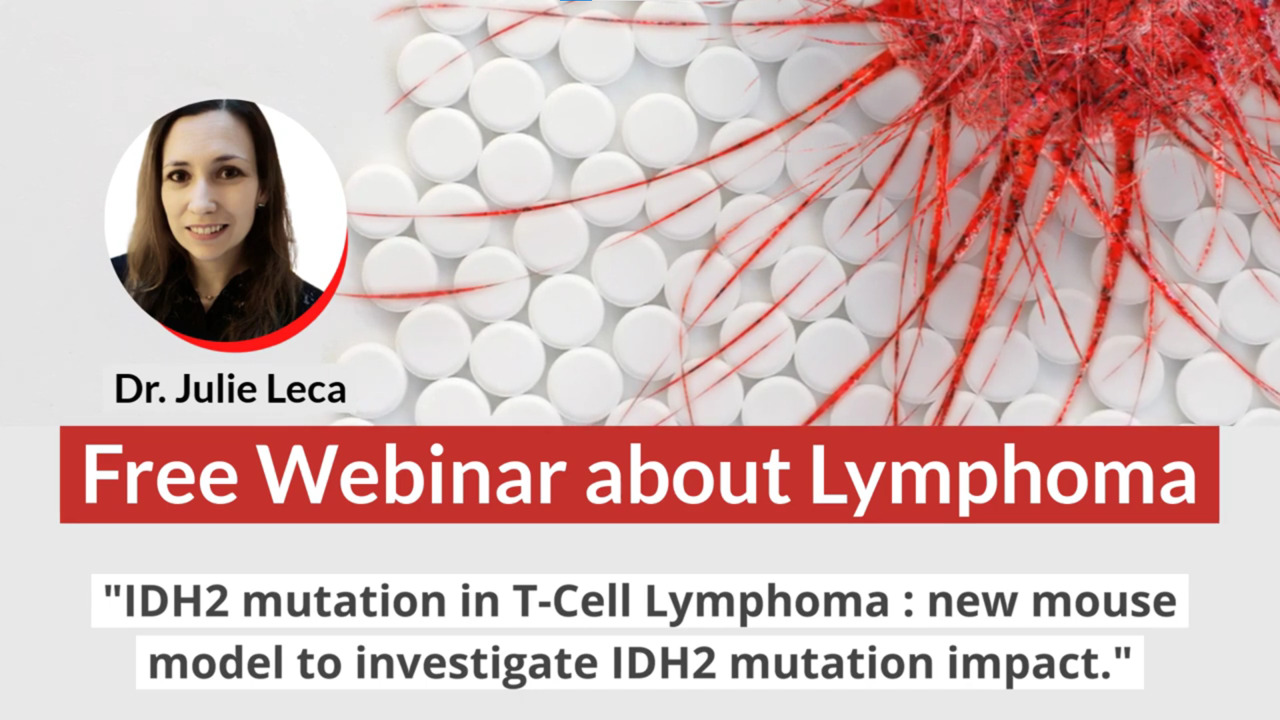When scientific research on lymphomas can be applied to COVID19…
Jean Feuillard’s team in Limoges is specialized in the immune system. During the month of May 2020, their research, which is usually on lymphomas, was applied to COVID19 thanks to the launch of a dedicated study.
- COVID19 and the immune system, why did you launch a study on the subject?
COVID-19 is associated with marked lymphopenia, correlated with morbidity and mortality. Lymphopenia corresponds to a decrease in the number of T lymphocytes (a population that makes up white blood cells or leukocytes) which are major players in the immune response, i.e. our defense system against viruses or bacteria attacks. Very few studies have characterized the consequences of this infection on the different subtypes of leukocytes.
- How did the scientific research carried out within CALYM and on lymphomas allow you to launch this study on COVID19?
With the development of immunotherapy in the treatment of many cancers, we have recently focused our research on the host-lymphoma relationship and tried to characterize the different populations of the immune system that could be involved in the development of the lymphoma. We have also been working for many years with the intensive care unit of the Limoges University Hospital, with which we are trying to characterize the hematological disruptions occurring during sepsis. With the pandemic, pooling our skills seemed obvious. We thus present here the first study with a follow-up over time of these blood leukocyte subtypes and the related functional changes. For this work, CIC INSERM 1435 and team 2 of UMR CNRS 7276 / INSERM 1262 joined forces to study in detail the effects of the SARS-Cov-2 virus on the immune system of patients in respiratory distress admitted to intensive care. We also received logistical support from the intensive care unit and the hematology and bacteriology-virology and hygiene laboratories of the Limoges University Hospital for the inclusion and monitoring of patients, flow cytometry and viral loads.
Can you tell us a little more about how the study unfolded?
We recruited and followed during their first week in the hospital 13 patients infected with SARS-CoV-2 admitted to the intensive care unit and compared their immunological results with 10 controls. Patients uniformly presented with deep global lymphopenia and persistent up to day 7, affecting all lymphocyte subtypes. The median absolute lymphocyte count was significantly decreased, e.g. TCD4 lymphocyte levels averaged 0.29 [0.19-0.43] G / L which reflect deep immunosuppression as in HIV-infected patients.
What are the first observations you made?
We mainly used flow cytometry to obtain our results. We were able to characterize the main populations of cells involved in the anti-viral immune response, phenotypically and then, to some extent, functionally following in vitro stimulation of lymphocytes.
We demonstrated that the two main subpopulations of T lymphocytes which are CD4 and CD8 expressed signs of activation and exhaustion over time (increased expression of CTLA-4 and PD-16). A functional evaluation of T lymphocytes was performed in 3 patients and 3 controls for comparison. We demonstrated that CD4 T lymphocytes from COVID-19 patients produced less pro-inflammatory cytokines indicating a process of CD4 T depletion. In contrast, the few remaining CD8 T cells were probably engaged in an antiviral immune response since they were able to produce higher levels of IFN-γ and TNF-α. Consistently, the percentages of effector T CD4 cells were decreased while those of effector and activated memory CD8 T cells were increased.
We also observed the development of global immunosuppression with the increase of different cell types known to regulate inflammation in peripheral blood, such as regulatory T12. The monocytes no longer expressed the HLA-DR, which normally activates the immune response by presenting the antigen to the T lymphocyte. Their function as an antigen-presenting cell was therefore reduced. In addition, the expression of the immunosuppressive molecule PD-L1 on their surface suggests that they even inhibited the T lymphocyte response.
Since cytokines are indicators of inflammation but also of damage to organs (here the lungs), we determined their blood concentrations. IL-6 and IL-88 levels were moderately but significantly and sustainably increased over time while TNF-a et IL-1b levels were normal, reflecting a moderate and subacute inflammatory response13 of the cells immune system linked to SARS-CoV-2.
- What results are available to date?
Our results, among the very first published, were then confirmed by studies on larger cohorts or using mass cytometry or single cell technologies (Hadjadj et al., Science 10.1126 / science.abc6027; Silvin et al. , Cell 10.1016 / j.cell.2020.08.002; Mathew et al., Science 10.1126 / science.abc8511). They strongly suggest that the virus has a multifactorial devastating effect by causing a sharp decrease in virtually all classes of adaptive (acquired) immune cells and an increase in T cell immunosuppression mechanisms in critically ill COVID-19 patients. Since T cells are essential for the definitive clearance of the virus, these results call into question therapies (eg, anti-IL-6, JAK inhibitors) that block the patients ability to escalate an effective immune response against SARS-CoV-2. Knowing that all anti-inflammatory treatments consistently failed in cases of sepsis, it seems right to consider instead treatments that strengthen the hosts immunity in certain specific cases, such as in these extremely lymphopenic COVID-19 patients1 ( e.g. IL-7, IFN-γ or checkpoint inhibitors).
- Do you think you will continue to transfer the skills of your laboratory on the COVID-19 field?
The main interest of our laboratory is to understand the mechanisms involved in B lymphomagenesis. B-lymphocytes play a very important role in the anti-viral response with the production of antibodies. Together with Michel Cogné, we set up in July a collaboration with the teams of Karine Tarte and Mikael Roussel in Rennes and Guillaume Monneret in Lyon to study the gene repertoire of immunoglobulins using high throughput sequencing and B lymphocyte subpopulations using CMF following infection by SARS-CoV2 in patients hospitalized in the intensive care unit. We are finalizing the analysis of the results, but we already know that there is a restriction in clonal diversity with the emergence of presumably specific clonotypes. This work could open very interesting perspectives for the recognition of the dominant antibodies in the response against this virus.
| Name | Definition |
|---|---|
| Lymphopenia | abnormally low number of lymphocytes (a type of white blood cell) in the blood (<1500 / mm3 in adults) |
| Morbidity | number of sick people or the number of cases of disease in a given population, at a given time |
| Flow cytometry | technique for counting and measuring cell properties |
| Viral loads | quantity of virus in the circulating blood |
| Immunosuppression | insufficiency of the body natural means of defense |
| CTLA-4 and PD-1 | Receptor inhibitor of T lymphocytes. For more definition, see the following references: P Vuagnat et al. December 2018. Anti-checkpoint immunotherapies: fundamental aspects. JNDES
|
| Functional evaluation | Set of techniques to confirm or not the correct functioning of T lymphocytes (for example: destruction of cells, production of messengers of the immune system: cytokines) |
| Pro-inflammatory cytokines | activate the body inflammatory reaction |
| IFN-γ | cytokines produced only by immune cells in the case of the adaptive (acquired) immune response |
| TNF-alpha | cytokine which plays a key role in the acute inflammatory reaction (fever, synthesis of inflammation proteins, recruitment of immune cells) |
| Effector TCD4 cells | T lymphocyte is “naive” until an antigen is recognized. Following this stimulation, it will therefore become an “effector” cell and can thus perform specialized functions (eg: secretion of cytokines, cell death via CD8 + LT) |
| Tumor microenvironment | M. Bruchard et al. 2014. Tumor microenvironment: Regulatory cells and immunosuppressive cytokines. Med Sci (Paris) 2014; 30: 429–435 |
| Subacute | low intensity but prolonged and only slightly weakened |
| Clearance | ability to eliminate a given substance |
| Sepsis | generalized inflammatory response associated with severe infection |



